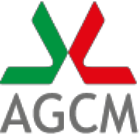I760 - Pharmaceuticals and Antitrust: the Italian Competition Authority fines Roche and Novartis over eur 180 million for cartelizing the sales of two major ophthalmic drugs, Avastin and Lucentis
PRESS RELEASE
PRESS RELEASE
PHARMACEUTICALS AND ANTITRUST: THE ITALIAN COMPETITION AUTHORITY FINES ROCHE AND NOVARTIS OVER EUR 180 MILLION FOR CARTELIZING THE SALES OF TWO MAJOR OPHTHALMIC DRUGS, AVASTIN AND LUCENTIS
The companies colluded to exclude the cheap drug Avastin, used in the treatment of the most common eyesight condition in the elderly as well as other serious sight problems, and channel demand towards the much more expensive drug Lucentis, through an artificial distinction between the two products. The anticompetitive agreement caused the Italian National Health Service to sustain additional expenses estimated at over EUR 45 million in 2012, while increased future costs might exceed EUR 600 million per year.
Novartis and Roche were imposed fines totaling respectively EUR 92 and 90,5 million.
On 27 February 2014, the Italian Competition Authority issued a decision finding that Roche and Novartis infringed article 101 TFEU by participating in an anticompetitive agreement in the market for ophthalmic drugs used to treat some serious vascular eyesight conditions, including age-related macular degeneration (AMD). AMD is the main cause of blindness in developed countries: in Italy alone a million people may be at risk of developing AMD. The companies were imposed fines exceeding EUR 180 million.
According to the Italian Competition Authority, this illicit collusion might have hindered access to treatment for many patients and caused the National Health Service to sustain additional expenses estimated at EUR 45 million in 2012, while increased future costs might possibly exceed EUR 600 million per year.The investigation was started in February 2013, on the basis of complaints filed by an association of private hospitals (Aiudapds) and the Italian Ophthalmologic Association. The Region Emilia Romagna and the consumer association Altroconsumo intervened in the proceedings.
The gathered evidence shows that since 2011 Roche and Novartis colluded to create an artificial product differentiation and purport Avastin as more dangerous than Lucentis, in order to influence prescriptions of doctors and health services.
Avastin is approved to treat some forms of cancer: yet, since mid-two-thousands it has been used off-label to treat also common eyesight conditions. Lucentis contains an active substance similar to Avastin’s, but it has been submitted for regulatory approval by Genentech in the US and Novartis everywhere else specifically for the eyesight conditions previously treated through Avastin. There is a significant difference in price: while an injection of Lucentis in Italy costs 900 euros (down from an earlier price of 1.700 euros), the price of an off-label injection of Avastin tops at 81 euros.
Roche and Novartis set up a complex collusive strategy, with a view to avoiding that the commercial success of Lucentis be hindered by the ophthalmic applications of Avastin. Such efforts of the companies intensified since a growing number of independent comparative studies supported the equivalence of the two drugs in ophthalmic uses.
The economic rationale of firms’ conduct stems from the relationship between the Roche and Novartis groups: while Roche collects significant royalties from the sales of Lucentis, which has been developed by its subsidiary Genentech, Novartis benefits directly from Lucentis’ sales and holds a >30% share in Roche. Genentech was not considered liable for the infringement.
The Italian Competition Authority, in light of the seriousness of the infringement, imposed on Roche and Novartis fines totaling respectively 90,5 and 92 million euros.
Rome, 5th March 2014

